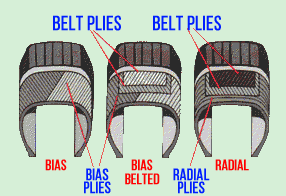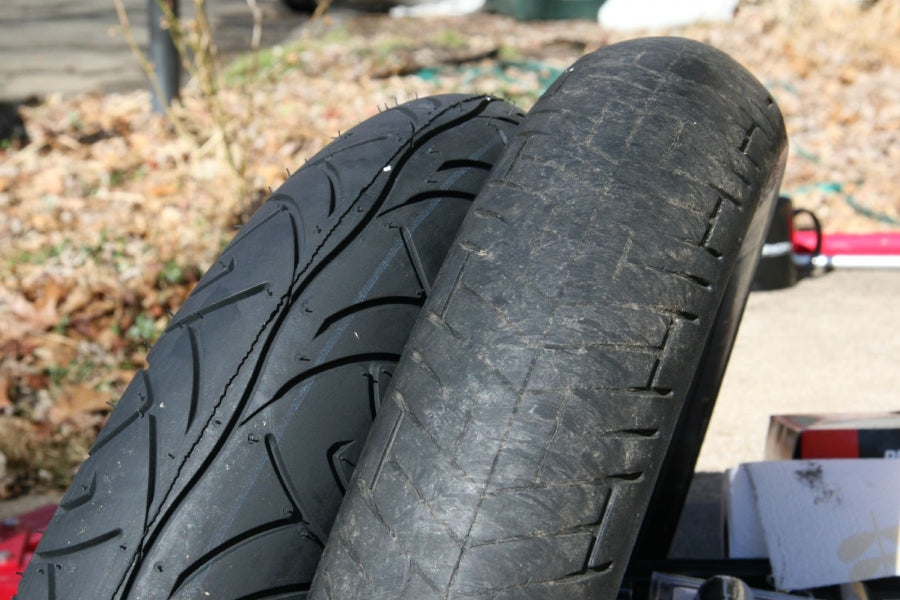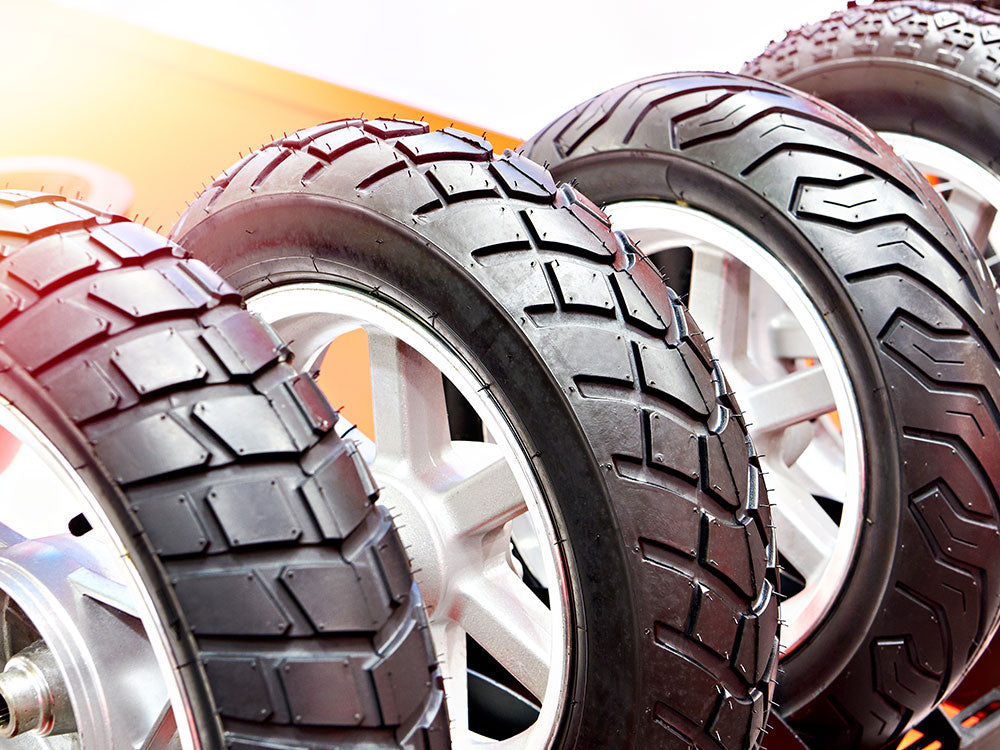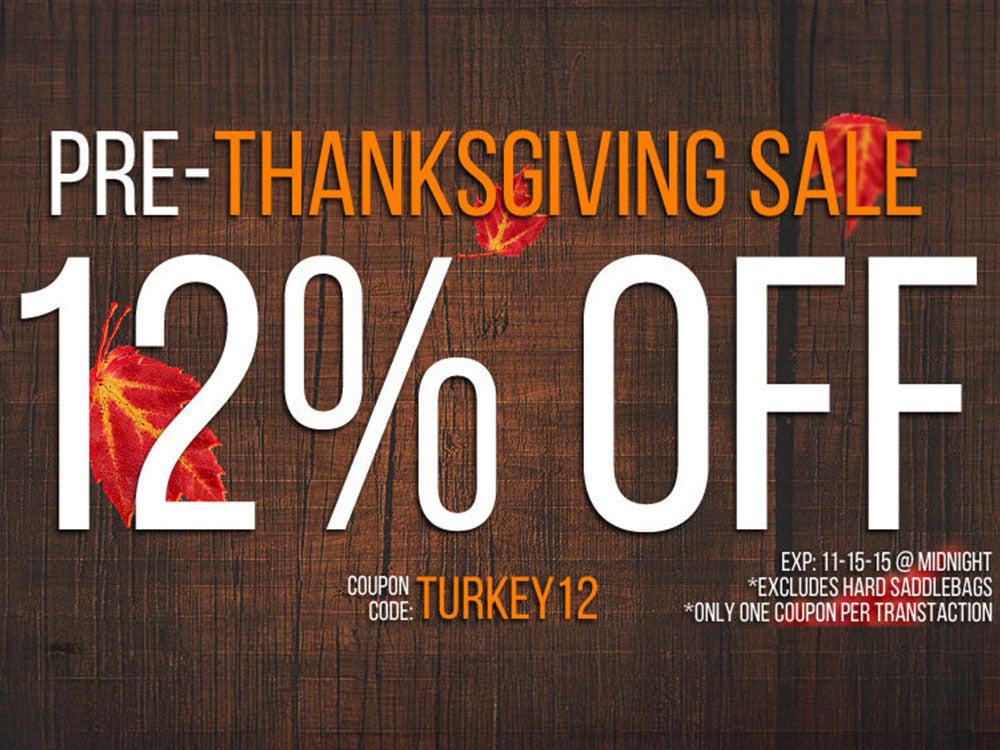At some point, you will need to replace your tires. Now there is a school of thought that says if you were happy with the way your bike rode and handled with the tires that were on it, stick with them. I call this the “if it ain’t broke, don’t fix it” school of thought. While there is some merit to this, many new bikes don’t come with the best tires from the factory, and if you bought yours used and they aren’t the stock tires, you have no idea what decision criteria the previous owner used.

Regardless of manufacturer, there are generally two types of tires, bias ply and radial. Bias ply tires were around first and most bikes sold still come with bias ply tires. All tires have plies, which are the layers of cords embedded within the tire’s rubber that prevent the rubber from stretching due to external pressure. Bias ply tires have their plies laid out diagonally from side to side in a cross or X pattern. The plies extend up the sidewalls of the tire. Radial tires have their plies laid down from side to side in overlapping layers across the tire at roughly ninety degree angles to the center line of the tire tread. Additionally, more layers are applied to the tread portion of the tire only, resulting in sidewalls that aren’t as thick as bias ply tires.
So what difference does it make? Well, radial tires were invented to address some of the unwanted characteristics of bias tires. First of all, radial tires dissipate heat better than bias tires. Secondly, since radial tires have fewer plies in the sidewall, they are able to flex a little better. This results in more of the tread staying in contact with the road when under pressure. This results in better handling and a smoother ride. Bias tires are more prone to handling degradation when not inflated to their ideal specs. Radials usually wear better, providing more tread life and in many cases, better fuel economy.
So why don’t all bikes have radial tires? A big factor is cost. Radial tires are usually more expensive than bias tires (and now you know why the bike manufacturers are still putting bias tires on most of their new bikes). If cost is your main consideration, a bias tire will be less expensive than a comparable radial. That being said, you have to make sure you are comparing apples to apples as you can easily find higher end bias tires that cost more than other low end radials. Radials, due to their design, also allow for tires with wider tread than sidewall height, whereas on bias tires, these two tend to be the same. So if you want a fat rear tire, chances are a bias tire is out of the question.

It is also possible to run with a bias tire in the front and a radial in the rear, but never the other way around. You usually see this on chopper style bikes that have a skinny, large diameter front tire and a really wide rear tire. However, there is another case based again on cost. Chances are that your rear tire will need to be replaced sooner than your front. If you are looking to switch from stock bias tires to radials, but want to spread the cost out over a longer period of time you can do just the rear tire first to get a bit more life out of your front bias tire. Now I know people who swear by this, but from my own experience, I wasn’t happy with the handling with that setup. Whenever I hit grooved pavement, it always felt like the front bias tire wanted to go one way, while the rear radial wanted to go the other. Ultimately, I ended up putting a radial on the front sooner than the tread wear called for with a matching radial. The handling was greatly improved.
So which tire is right for you? Sorry, I can’t answer that question for you. Even though radials provide better handling in general, if you are riding a cruiser, chances are that you aren’t stressing the limits of your tire design like a sport bike would, so a good bias tire might work just as well for you. On the other hand, many swear that the extended tread life of a radial more than offsets the upfront cost increase. You can ask your fellow riders and on forums and you’ll probably get a wide range of answers. You can also ask at your shop. Ultimately, the decision is up to you. However, since you can’t try out tires on your bike before you buy them and generally can’t return them either, it pays to do a little research first.













Leave a comment
All comments are moderated before being published.
This site is protected by hCaptcha and the hCaptcha Privacy Policy and Terms of Service apply.